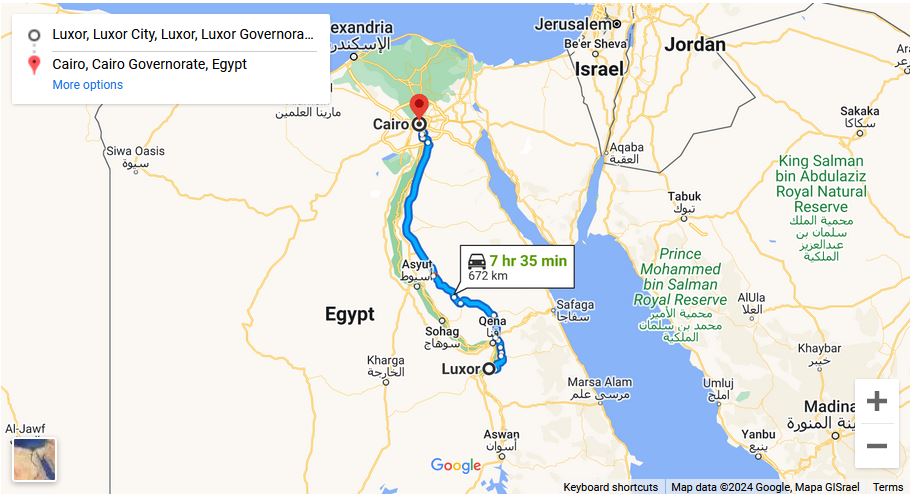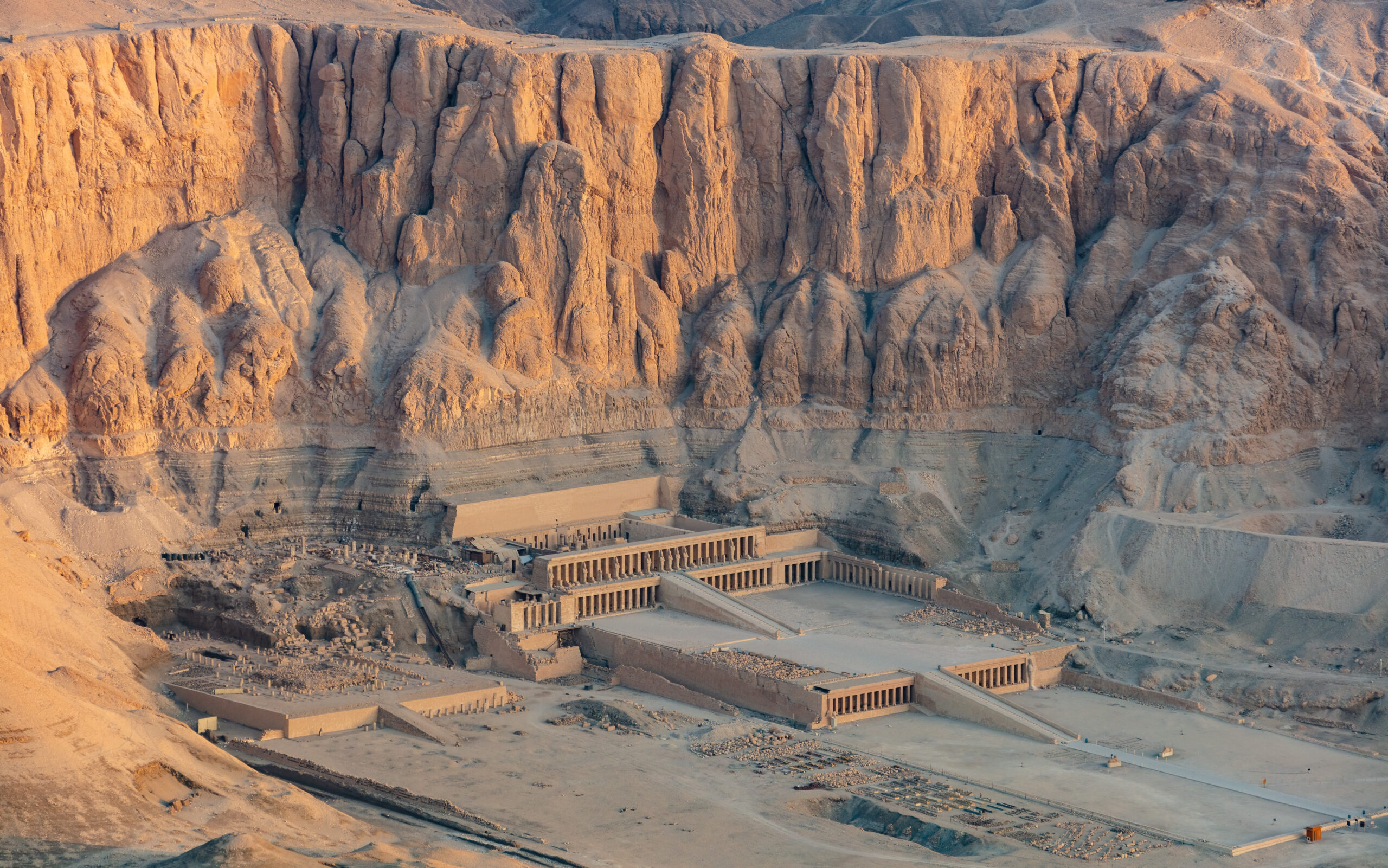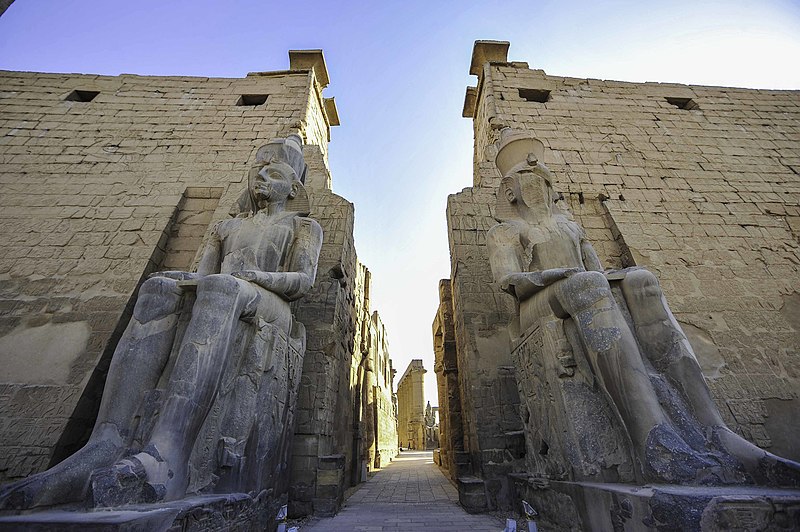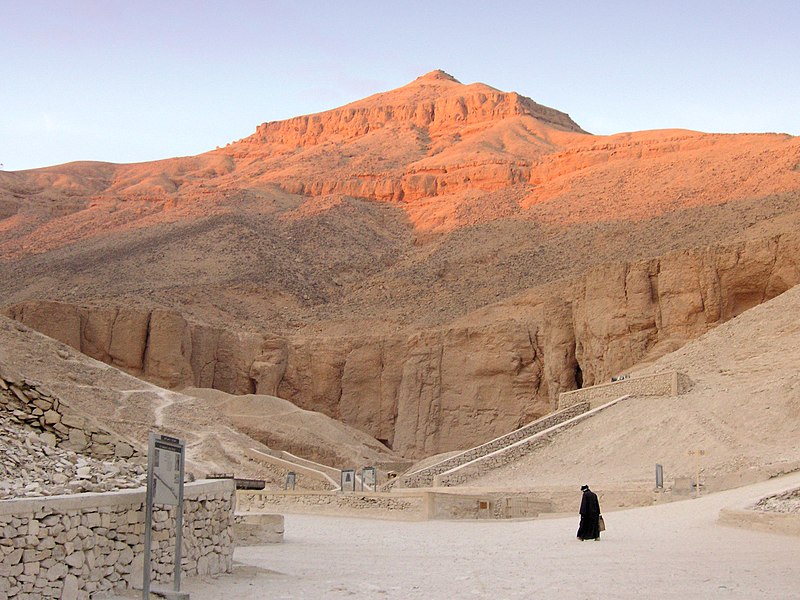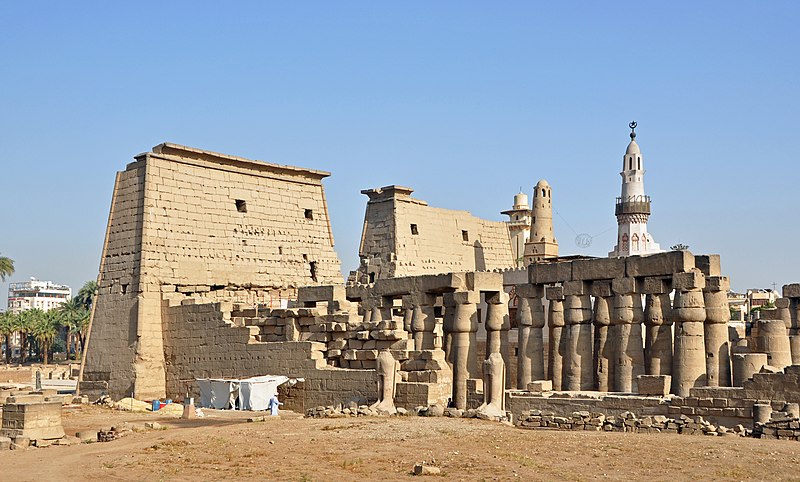Flight back to UK, British Airways.
December 1994
The journey from Luxor to Cairo is a voyage through the heart of Egypt, traversing the storied landscapes of the Nile River Valley and offering travelers the opportunity to explore some of the country’s most iconic landmarks and ancient treasures. This journey, which spans approximately 420 miles (675 kilometers), can be undertaken by various modes of transportation, including air, train, or road, each offering its own unique perspective on the beauty and diversity of Egypt.
For travelers opting to fly from Luxor to Cairo, the journey begins at Luxor International Airport, where they board a short flight that takes them northward across the Nile River and over the vast desert landscapes of Upper Egypt. From the air, travelers can admire panoramic views of Luxor’s ancient temples and monuments, including the Temple of Karnak, the Temple of Luxor, and the Colossi of Memnon, as well as the lush green fields and palm groves that line the banks of the Nile.
Upon arrival in Cairo, travelers are greeted by the bustling energy and modern skyline of Egypt’s capital city, which stands as a vibrant juxtaposition of ancient history and contemporary culture. From the towering minarets of Islamic mosques to the bustling markets and traffic-choked streets, Cairo offers travelers a sensory feast of sights, sounds, and smells that reflect the rich tapestry of Egyptian life.
For those who prefer a more leisurely journey, traveling from Luxor to Cairo by train offers a scenic and comfortable option. The journey takes travelers along the banks of the Nile River, past picturesque villages, fertile farmland, and ancient archaeological sites that dot the landscape. As the train winds its way northward, travelers can relax and enjoy panoramic views of the river and surrounding countryside, while savoring the unique sights and sounds of life along the Nile.
Along the way, the train makes stops at several historic cities and towns, including Minya, Beni Suef, and Giza, providing travelers with the opportunity to explore local markets, sample traditional cuisine, and interact with friendly locals. Whether enjoying a cup of sweet tea at a roadside cafe or bargaining for souvenirs at a bustling bazaar, these encounters offer travelers a glimpse into the warmth and hospitality of Egyptian culture.
For travelers seeking a more adventurous experience, traveling from Luxor to Cairo by road offers the opportunity to explore Egypt’s diverse landscapes and historic landmarks at their own pace. The journey takes travelers along the scenic desert highways of Upper Egypt, past ancient temples, sand dunes, and desert oases that have been traversed by caravans for millennia.
Along the way, travelers can make stops at several historic sites and attractions, including the ancient city of Memphis, the necropolis of Saqqara, and the pyramids of Giza, where they can marvel at the iconic Sphinx and explore the ancient tombs and temples of Egypt’s pharaohs. Whether cruising along the open road or stopping to take in the sights and sounds of ancient Egypt, traveling from Luxor to Cairo by road offers an unforgettable adventure through the heart of one of the world’s oldest civilizations.
In conclusion, the journey from Luxor to Cairo offers travelers a captivating voyage through the heart of Egypt, showcasing the country’s rich history, diverse landscapes, and vibrant culture. Whether flying, taking the train, or traveling by road, each mode of transportation offers its own unique perspective on the beauty and majesty of Egypt, leaving travelers with memories that will last a lifetime.
The Avenue of Sphinxes, or Sphinx Alley, is an ancient ceremonial pathway that connects the temples of Karnak and Luxor on the east bank of the Nile River in Luxor, Egypt. Stretching for approximately three kilometers (about two miles) in length, this grand processional avenue is lined with hundreds of sphinx statues, creating a majestic corridor that once served as a symbolic link between the religious and administrative centers of ancient Thebes, now modern-day Luxor.
The origins of the Avenue of Sphinxes date back to the New Kingdom period of ancient Egypt, around the 16th century BCE, when the pharaoh Amenhotep III commissioned its construction as part of a larger temple complex dedicated to the god Amun-Ra. Originally, the avenue connected the Temple of Karnak, the largest religious complex in ancient Egypt, with the Temple of Mut, the consort of Amun, located to the south.
Over time, successive pharaohs, including Ramses II and Ramses III, expanded and embellished the Avenue of Sphinxes, transforming it into a grand ceremonial thoroughfare that extended all the way to the Temple of Luxor, which served as the main entrance to the ancient city of Thebes. The sphinxes that lined the avenue were carved from granite and limestone, with the bodies of lions and the heads of rams, symbolizing the power and authority of the pharaohs and the protective deities of the underworld.
The Avenue of Sphinxes played a central role in the religious and civic life of ancient Thebes, serving as the route for grand processions, royal ceremonies, and religious festivals that celebrated the divine kingship of the pharaohs and honored the gods of ancient Egypt. Pilgrims, priests, and dignitaries would walk along the avenue, passing beneath the watchful gaze of the sphinxes, as they made their way to the temples to pay homage to the gods and seek their blessings.
In addition to its religious significance, the Avenue of Sphinxes also served as a symbol of the pharaoh’s power and authority, with its grandeur and magnificence reflecting the wealth and prosperity of ancient Egypt. The avenue was adorned with statues, obelisks, and monumental gateways that celebrated the achievements of the pharaohs and proclaimed their divine right to rule.
Despite the passage of millennia, the Avenue of Sphinxes has retained much of its grandeur and mystique, with its rows of weathered sphinx statues standing as silent sentinels to Egypt’s ancient glory. In recent years, efforts have been made to restore and preserve the avenue, including the excavation and restoration of sections that had been buried beneath modern development.
Today, the Avenue of Sphinxes stands as one of Luxor’s most iconic and visited archaeological sites, attracting tourists from around the world who come to marvel at its ancient splendor and explore its mysteries. Guided tours of the avenue provide valuable insights into its history, symbolism, and significance, allowing visitors to appreciate the ingenuity and craftsmanship of the ancient Egyptians who built this remarkable monument to their gods and pharaohs.
The Tomb of Ramses VI, located in the Valley of the Kings on the west bank of the Nile River near Luxor, Egypt, is one of the most impressive and well-preserved royal tombs from ancient Egypt. Built during the 20th Dynasty, around 1145 BCE, the tomb is renowned for its elaborate decorations, intricate reliefs, and stunning architectural features, which offer valuable insights into the religious beliefs, funerary practices, and artistic achievements of the New Kingdom era.

Ramses VI, the fifth pharaoh of the 20th Dynasty, ruled Egypt for approximately eight years during a period of political and social upheaval. Despite the relatively short duration of his reign, Ramses VI left a lasting legacy, commissioning numerous construction projects and military campaigns that expanded Egypt’s borders and strengthened its position as a regional power.
The Tomb of Ramses VI is one of the largest and most complex tombs in the Valley of the Kings, consisting of a series of corridors, chambers, and shafts that extend deep into the limestone cliffs of the valley. The tomb was designed to replicate the journey of the sun god Ra through the underworld, with the pharaoh’s burial chamber symbolizing the entrance to the afterlife and the eternal realm of the gods.
The entrance to the Tomb of Ramses VI is marked by a steep descending corridor adorned with colorful hieroglyphs and scenes from the Amduat, an ancient Egyptian funerary text that describes the sun god’s nightly journey through the underworld. As visitors descend into the tomb, they are greeted by a series of chambers decorated with stunning reliefs and paintings that depict scenes from the pharaoh’s life, reign, and divine transformation in the afterlife.
One of the most impressive features of the Tomb of Ramses VI is its burial chamber, which is adorned with a magnificent ceiling decorated with intricate astronomical scenes, including depictions of the night sky, constellations, and celestial deities. The chamber also contains a massive quartzite sarcophagus, which was originally intended to house the pharaoh’s mummified remains and serve as a vessel for his journey to the afterlife.
The walls of the burial chamber are adorned with detailed reliefs and inscriptions that depict Ramses VI’s journey through the underworld, his encounters with various deities and demons, and his eventual ascension to the realm of the gods. These scenes are accompanied by prayers, hymns, and magical spells intended to ensure the pharaoh’s safe passage and eternal protection in the afterlife.
In addition to its religious and funerary significance, the Tomb of Ramses VI also serves as a showcase of ancient Egyptian artistry and craftsmanship. The walls of the tomb are adorned with vividly colored paintings and reliefs that depict scenes of daily life, royal ceremonies, and religious rituals, offering a glimpse into the cultural and artistic achievements of the New Kingdom era.
Today, the Tomb of Ramses VI stands as a testament to the enduring legacy of ancient Egypt and its profound impact on human history and civilization. Despite the passage of millennia, the tomb continues to captivate and inspire visitors from around the world, offering a window into the mysteries of the pharaohs and the splendor of their royal tombs.
The Tomb of King Tutankhamun, often referred to simply as King Tut, is one of the most famous and iconic archaeological discoveries in history. Located in the Valley of the Kings on the west bank of the Nile River near Luxor, Egypt, this tomb was unearthed by British archaeologist Howard Carter in 1922, revealing a treasure trove of artifacts that had lain undisturbed for over 3,000 years.
Tutankhamun, the boy king who ruled Egypt during the 18th Dynasty from around 1332 to 1323 BCE, ascended to the throne at a young age and reigned for only nine years before his untimely death. Despite his short reign, Tutankhamun’s tomb is one of the most well-preserved and intact royal tombs ever discovered in Egypt, offering valuable insights into the burial practices, religious beliefs, and daily life of ancient Egyptian royalty.
The discovery of Tutankhamun’s tomb was the culmination of years of excavation and exploration by Howard Carter, who had been searching for the tomb since the early 20th century. On November 4, 1922, Carter made the historic breakthrough when he uncovered a flight of steps leading down into the rock-cut tomb, which had been hidden beneath layers of debris and rubble.
As Carter and his team entered the tomb, they were greeted by a scene of unparalleled splendor and opulence. The tomb’s antechamber was filled with a vast array of treasures, including golden statues, jewelry, furniture, and ceremonial objects, all meticulously arranged around the sarcophagus of the young pharaoh.
Beyond the antechamber lay a series of smaller chambers, each containing more treasures and artifacts that had been placed alongside Tutankhamun’s mummified remains. The innermost chamber, known as the burial chamber, housed the king’s elaborately decorated sarcophagus, which was made of solid gold and adorned with intricate reliefs and inscriptions.
One of the most famous treasures found in Tutankhamun’s tomb is the golden death mask, which covered the king’s mummified face and was intended to ensure his safe passage into the afterlife. Crafted from solid gold and inlaid with precious stones, the mask is considered one of the finest examples of ancient Egyptian artistry and craftsmanship, with its lifelike features and exquisite detail capturing the imagination of people around the world.
In addition to the death mask, Tutankhamun’s tomb contained a wealth of other treasures, including golden thrones, chariots, weapons, and musical instruments, as well as everyday objects such as furniture, clothing, and food items. These artifacts provide valuable insights into the daily life, religious beliefs, and cultural practices of ancient Egypt, offering a glimpse into the world of Tutankhamun and his royal court.
The discovery of Tutankhamun’s tomb sparked worldwide fascination with ancient Egypt and ignited a renewed interest in archaeology and exploration. The artifacts from the tomb have toured the world, captivating millions of people with their beauty, mystery, and historical significance.
Today, the Tomb of King Tutankhamun remains one of Egypt’s most visited and celebrated archaeological sites, attracting tourists from around the world who come to marvel at its wonders and explore the mysteries of ancient Egypt. Despite the passage of millennia, the legacy of Tutankhamun lives on, inspiring awe and wonder in all who encounter his treasures.
The Luxor Museum, located on the east bank of the Nile River in Luxor, Egypt, stands as a treasure trove of ancient Egyptian artifacts and a testament to the rich cultural heritage of the region. Opened in 1975, the museum was designed to showcase the wealth of archaeological discoveries made in the Luxor area, including artifacts from the nearby temples, tombs, and monuments that date back thousands of years.
One of the most remarkable aspects of the Luxor Museum is its unique architectural design, which blends seamlessly with the surrounding landscape and reflects the ancient Egyptian aesthetic. The museum’s facade is adorned with intricate hieroglyphs, reliefs, and statues that pay homage to the gods, pharaohs, and mythical creatures of ancient Egypt, creating a sense of awe and wonder for visitors as they approach the entrance.
Inside the museum, visitors are greeted by a stunning collection of artifacts that span the various periods of ancient Egyptian history, from the Predynastic period to the Greco-Roman era. The museum’s exhibits are arranged thematically and chronologically, allowing visitors to explore the evolution of Egyptian art, religion, and culture over thousands of years.
One of the highlights of the Luxor Museum is its collection of statues, which includes some of the finest examples of ancient Egyptian sculpture ever discovered. Among the most famous pieces is a colossal statue of Amenhotep III, the 18th Dynasty pharaoh known for his grand building projects and lavish lifestyle. Standing over 13 meters tall, the statue is one of the largest ever found in Egypt and serves as a striking reminder of the power and majesty of the ancient Egyptian rulers.
Another notable exhibit is the cache of statues and artifacts from the nearby temple of Karnak, which were discovered buried beneath the temple’s floor during excavations in the early 20th century. These artifacts provide valuable insights into the religious beliefs, rituals, and practices of the ancient Egyptians, with finely carved reliefs, statues, and ritual objects that depict scenes from temple ceremonies and divine offerings.
The Luxor Museum also boasts an impressive collection of funerary artifacts from the nearby Valley of the Kings, including mummies, coffins, and burial goods that offer a glimpse into ancient Egyptian burial practices and beliefs about the afterlife. Among the most striking pieces is the beautifully decorated coffin of the noblewoman Ahhotep, which is adorned with intricate hieroglyphs, scenes of daily life, and protective deities.
In addition to its permanent exhibits, the Luxor Museum also hosts temporary exhibitions, lectures, and educational programs that explore various aspects of ancient Egyptian history and culture. These events provide visitors with the opportunity to deepen their understanding of ancient Egypt and engage with scholars, archaeologists, and experts in the field.
Overall, the Luxor Museum stands as a testament to the enduring legacy of ancient Egypt and its profound impact on human history and civilization. With its stunning architecture, world-class exhibits, and rich educational programs, the museum offers visitors a unique opportunity to explore the wonders of ancient Egypt and experience the magic of Luxor’s archaeological heritage firsthand.
The Temple of Hatshepsut at Deir el-Bahari stands as a remarkable testament to the ingenuity, power, and legacy of one of ancient Egypt’s most celebrated pharaohs. Situated on the west bank of the Nile River near Luxor, Egypt, this magnificent temple complex is dedicated to Hatshepsut, the fifth pharaoh of the 18th Dynasty, who reigned from approximately 1479 to 1458 BCE.
The temple was commissioned by Hatshepsut herself as a memorial to her reign and as a testament to her divine right to rule. Built within a natural amphitheater of towering limestone cliffs, the Temple of Hatshepsut is a masterpiece of ancient Egyptian architecture, blending seamlessly with the surrounding landscape and reflecting the queen’s desire to create a lasting monument to her greatness.
One of the most striking features of the Temple of Hatshepsut is its unique design, which consists of three terraced colonnades connected by ramps and stairways. The temple’s lower terrace is adorned with a series of colossal statues of Hatshepsut as the god Osiris, while the middle terrace features a colonnaded courtyard and sanctuary dedicated to the god Amun-Ra. The upper terrace, known as the Birth Colonnade, is decorated with scenes depicting the divine birth and coronation of Hatshepsut, reinforcing her claim to the throne and divine legitimacy.
The temple’s architecture and decoration are a testament to Hatshepsut’s ambition and vision, with intricate reliefs, statues, and hieroglyphs that celebrate her achievements as a ruler, diplomat, and warrior. Scenes from her military campaigns in Nubia and the Sinai Peninsula adorn the walls of the temple, depicting her victorious battles and triumphant return to Egypt with spoils of war.
In addition to its religious and political significance, the Temple of Hatshepsut also served as a center of cultural and economic activity in ancient Egypt. The temple complex housed workshops, storerooms, and administrative offices, where artisans, scribes, and bureaucrats worked together to manage the kingdom’s affairs and maintain its prosperity.
The Temple of Hatshepsut fell into disrepair following her death and was later vandalized and partially destroyed by her successors, who sought to erase her memory from history. In the centuries that followed, the temple was buried beneath layers of sand and debris, its existence forgotten until its rediscovery by modern archaeologists in the 19th century.
Today, the Temple of Hatshepsut stands as one of Egypt’s most iconic and visited archaeological sites, attracting millions of tourists from around the world who come to marvel at its grandeur and explore its mysteries. Guided tours of the temple provide valuable insights into its history, architecture, and significance, allowing visitors to appreciate the ingenuity and craftsmanship of the ancient Egyptians who built this remarkable monument.
With its towering columns, majestic statues, and richly decorated halls, the Temple of Hatshepsut continues to inspire wonder and awe, serving as a testament to the enduring legacy of ancient Egypt and its profound impact on human history and civilization. Hatshepsut’s temple at Deir el-Bahari stands as a testament to her greatness and enduring legacy, ensuring that her memory lives on for generations to come.
Luxor Temple, situated on the east bank of the Nile River in the heart of modern-day Luxor, Egypt, stands as a testament to the grandeur and splendor of ancient Egyptian civilization. Built over a span of nearly 1,500 years, from the 14th century BCE to the 4th century CE, Luxor Temple served as a center of religious worship, royal ceremonies, and political power throughout Egypt’s history, bearing witness to the rise and fall of pharaohs, conquerors, and empires.
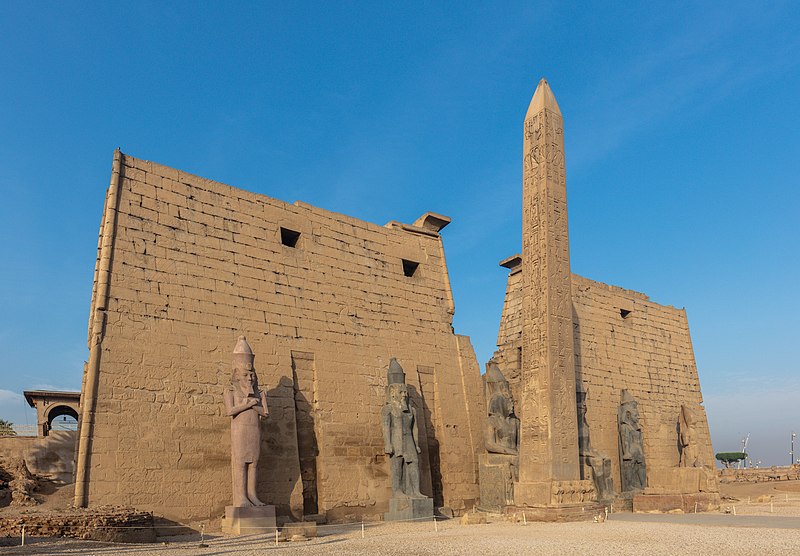
The temple’s origins date back to the reign of Amenhotep III (1390–1352 BCE) during Egypt’s New Kingdom era. Originally dedicated to the Theban Triad—Amun, his consort Mut, and their son Khonsu—Luxor Temple was constructed as a grandiose expression of royal power and divine authority. The temple complex was expanded and modified by subsequent pharaohs, including Tutankhamun, Ramses II, and Amenhotep IV (later known as Akhenaten), each adding their own contributions to its architectural design and decoration.
One of the most striking features of Luxor Temple is its massive entrance, known as the First Pylon, which is adorned with colossal statues of Ramses II seated on his throne and flanked by smaller statues of the goddess Sekhmet. Beyond the First Pylon lies the Great Court, a vast open-air courtyard surrounded by towering columns, obelisks, and colossal statues of pharaohs and gods. This central area served as a gathering place for priests, worshippers, and ceremonial processions during religious festivals and rituals.
The centerpiece of Luxor Temple is the inner sanctuary, which consists of a series of halls, chambers, and shrines dedicated to the Theban Triad and other important deities. The most sacred area of the temple is the Holy of Holies, a small chamber that housed the divine statue of Amun, believed to be the physical embodiment of the god’s spirit. Access to the Holy of Holies was restricted to high-ranking priests and pharaohs, who performed rituals and offerings to honor the gods and ensure their favor.
Throughout its history, Luxor Temple underwent numerous modifications and renovations, reflecting the changing religious and political landscape of ancient Egypt. During the reign of Amenhotep IV (Akhenaten), the temple was briefly dedicated to the worship of the sun god Aten, and later pharaohs, including Ramses II and Alexander the Great, added their own contributions to its structure and decoration.
In addition to its religious significance, Luxor Temple also served as a political and administrative center for the ruling pharaohs, who used it as a venue for royal ceremonies, state functions, and diplomatic affairs. The temple’s grand architecture, lavish decorations, and strategic location made it a symbol of Egypt’s wealth, power, and prestige, attracting pilgrims, traders, and dignitaries from across the ancient world.
Today, Luxor Temple stands as one of Egypt’s most iconic and visited archaeological sites, attracting millions of tourists from around the world who come to marvel at its grandeur and explore its mysteries. Guided tours of the temple provide valuable insights into its history, architecture, and significance, allowing visitors to appreciate the ingenuity and craftsmanship of the ancient Egyptians who built this remarkable monument. With its towering columns, majestic statues, and richly decorated halls, Luxor Temple continues to inspire wonder and awe, serving as a testament to the enduring legacy of ancient Egypt and its profound impact on human history and civilization.
The Valley of the Kings, nestled on the western bank of the Nile River near Luxor in Egypt, stands as one of the most iconic and awe-inspiring archaeological sites in the world. Renowned for its vast necropolis containing the tombs of ancient Egyptian pharaohs, queens, and nobles, the Valley of the Kings is a testament to the grandeur and splendor of Egypt’s New Kingdom era, spanning from approximately 1550 BCE to 1069 BCE.

The Valley of the Kings served as the burial ground for pharaohs and other elite members of ancient Egyptian society for nearly 500 years, beginning with the reign of Thutmose I and ending with the reign of Ramesses XI. During this time, the valley became a site of immense religious and cultural significance, as pharaohs sought to secure their eternal afterlife by constructing elaborate tombs filled with treasures, artworks, and inscriptions.
One of the most remarkable aspects of the Valley of the Kings is the sheer number and complexity of its tombs, which were carved deep into the limestone cliffs that line the valley. Over 60 tombs have been discovered in the valley so far, each with its own unique layout, decoration, and architectural features. While many of these tombs were looted in antiquity, others have been remarkably well-preserved, offering valuable insights into ancient Egyptian burial practices and beliefs.
Among the most famous and impressive tombs in the Valley of the Kings is the tomb of Tutankhamun, the young pharaoh who ruled Egypt during the 14th century BCE. Discovered by British archaeologist Howard Carter in 1922, the tomb of Tutankhamun is renowned for its stunning treasures, including the iconic golden mask that adorned the pharaoh’s mummified remains. The discovery of Tutankhamun’s tomb sparked worldwide fascination with ancient Egypt and remains one of the most significant archaeological finds in history.
In addition to the tomb of Tutankhamun, the Valley of the Kings is home to a number of other notable tombs, including those of Ramesses II, Seti I, and Thutmose III, each of which boasts intricate reliefs, colorful paintings, and hieroglyphic inscriptions that depict scenes from ancient Egyptian mythology, religious rituals, and the pharaoh’s journey to the afterlife.
Exploring the Valley of the Kings is a fascinating and immersive experience that offers visitors the opportunity to step back in time and witness the grandeur of ancient Egypt firsthand. Guided tours of the valley provide valuable insights into its history, archaeology, and significance, allowing visitors to appreciate the craftsmanship and ingenuity of the ancient Egyptians who built these remarkable tombs.
In addition to its archaeological significance, the Valley of the Kings also holds cultural and spiritual importance for modern Egyptians, who continue to honor and preserve the legacy of their ancestors. The valley remains a symbol of Egypt’s rich history and heritage, attracting visitors from around the world who come to marvel at its wonders and pay homage to the pharaohs who once ruled this ancient land.
In conclusion, the Valley of the Kings is a testament to the enduring legacy of ancient Egypt, showcasing the grandeur and splendor of one of the world’s greatest civilizations. With its majestic tombs, stunning artworks, and rich history, the valley continues to captivate and inspire visitors from around the globe, offering a glimpse into the mysteries of the past and the enduring spirit of human creativity and ingenuity.
The Temple of Karnak stands as one of the most magnificent and awe-inspiring religious complexes in the world, representing the pinnacle of ancient Egyptian architectural and artistic achievement. Located on the east bank of the Nile River near Luxor, Egypt, this sprawling temple complex covers an area of over 200 acres and was dedicated to the worship of the god Amun-Ra, the king of the gods in ancient Egyptian religion.

Construction of the Temple of Karnak began over 4,000 years ago during the Middle Kingdom period, but it was during the New Kingdom era, around 1550 BCE to 1069 BCE, that it reached its zenith under the reign of powerful pharaohs like Amenhotep III, Tutankhamun, and Ramesses II. Over the centuries, successive pharaohs added to and expanded the temple complex, resulting in a vast and elaborate ensemble of temples, pylons, obelisks, statues, and halls that have captivated visitors for millennia.

One of the most striking features of the Temple of Karnak is its monumental entrance, known as the Avenue of Sphinxes. This grand processional avenue stretches for nearly two miles from the Luxor Temple to the entrance of Karnak and is lined with hundreds of sphinx statues, each carved from granite and depicting the body of a lion with the head of a ram, symbolizing the sun god Amun.

Upon entering the temple complex, visitors are greeted by the first pylon, a massive stone gateway adorned with intricate carvings and hieroglyphs that depict scenes from ancient Egyptian mythology and religious rituals. Beyond the first pylon lies the Great Court, a vast open-air courtyard surrounded by towering columns and statues of pharaohs and gods. This central area served as a gathering place for priests, worshippers, and ceremonial processions during religious festivals and rituals.
Continuing further into the temple complex, visitors encounter the Hypostyle Hall, one of the most impressive architectural achievements of ancient Egypt. This colossal hall features 134 towering columns, each over 20 meters tall and adorned with intricate hieroglyphs, reliefs, and painted decorations. The sheer scale and grandeur of the Hypostyle Hall are awe-inspiring, evoking a sense of reverence and wonder that has endured for thousands of years.
Beyond the Hypostyle Hall lie a series of smaller temples, chapels, and sanctuaries dedicated to various gods and goddesses, including Mut, Khonsu, and Osiris. These structures are adorned with exquisite carvings, statues, and paintings that depict scenes from Egyptian mythology, religious rituals, and royal ceremonies, offering valuable insights into the beliefs and practices of ancient Egyptian society.
One of the most iconic features of the Temple of Karnak is the Sacred Lake, a large rectangular pool located near the center of the complex. This artificial lake served as a symbolic representation of the primeval waters of creation and was used by priests for ritual purification and ceremonial activities.
In addition to its religious significance, the Temple of Karnak also served as a center of political, economic, and cultural activity in ancient Egypt. It was here that pharaohs held court, conducted diplomatic affairs, and oversaw the administration of the kingdom. The temple complex was also a hub of artistic and intellectual innovation, with artisans, scribes, and scholars working together to create some of the most exquisite works of art and literature in Egyptian history.
Today, the Temple of Karnak stands as a testament to the enduring legacy of ancient Egypt and continues to inspire wonder and admiration among visitors from around the world. Its colossal architecture, intricate artwork, and profound spiritual significance make it a must-visit destination for anyone interested in the history, culture, and mysteries of ancient Egypt.
Nestled along the east bank of the Nile River, Luxor stands as a living testament to the grandeur of ancient Egyptian civilization. Formerly known as Thebes, this city served as the religious and political capital for much of Egypt’s history and is home to an unparalleled collection of temples, monuments, and tombs that chronicle the country’s rich past. Luxor, often referred to as the “world’s greatest open-air museum,” invites visitors to walk in the footsteps of pharaohs and explore the wonders of a bygone era.
The Karnak Temple Complex, a colossal network of sanctuaries, pylons, and obelisks, is a magnificent tribute to the divine. Dedicated primarily to the god Amun, Karnak was constructed over several centuries by numerous pharaohs, including Amenhotep III, Tutankhamun, and Ramses II. The Great Hypostyle Hall, with its forest of towering columns adorned with intricate hieroglyphics, is a mesmerizing testament to ancient Egyptian engineering and artistic prowess.
Adjacent to Karnak, the Luxor Temple is an awe-inspiring monument of symmetrical design. Originally connected to Karnak by the Avenue of Sphinxes, the Luxor Temple is dedicated to the rejuvenation of kingship and features colossal statues, obelisks, and intricately decorated walls. The temple’s transformation through various dynasties is evident, from the original construction by Amenhotep III to later additions by Tutankhamun, Horemheb, and Ramses II.
The Valley of the Kings, on the west bank of the Nile, is a necropolis that holds the final resting place of numerous pharaohs, including the famous tomb of Tutankhamun. Carved into the rocky hills, the valley is a testament to ancient Egyptian beliefs in the afterlife, with elaborate burial chambers adorned with intricate paintings and hieroglyphs. The adjacent Valley of the Queens and the Valley of the Nobles further contribute to the necropolis’s significance.
Rising on the west bank, the Mortuary Temple of Hatshepsut, also known as Djeser-Djeseru, is a marvel of classical architecture. Designed to honor the female pharaoh Hatshepsut, the temple features terraced colonnades, statues, and reliefs that narrate the queen’s divine birth and her achievements as a ruler.
The Colossi of Memnon, two massive statues of Amenhotep III, guard the entrance to the Valley of the Kings. These imposing figures, each over 18 meters in height, once adorned the pharaoh’s mortuary temple and are a striking representation of ancient Egyptian monumental art.
Luxor’s significance extends beyond its ancient monuments. The modern city, with its bustling markets, vibrant streets, and riverside promenade, provides a contemporary backdrop to the historical wonders. The Luxor Museum, located on the corniche, displays a collection of artifacts that offer a deeper understanding of the city’s history, including the exquisite treasures from Tutankhamun’s tomb.
As the sun sets over the Nile, Luxor transforms into a spectacle of lights, illuminating its timeless wonders. The city’s allure lies not only in its archaeological treasures but also in the atmospheric charm that permeates its streets, creating an enchanting blend of the ancient and the contemporary.
In conclusion, Luxor stands as a living testament to the splendor of ancient Egypt. Its temples, tombs, and monuments narrate the stories of pharaohs and deities, inviting visitors to unravel the mysteries of the past. Luxor, with its unparalleled historical significance and enduring charm, remains a destination that captivates the imagination and provides a gateway to the mysteries of an extraordinary civilization.
The journey from Edfu to Luxor is a captivating expedition through the heart of ancient Egypt, offering travelers the opportunity to explore some of the country’s most iconic landmarks and immerse themselves in its rich history and culture. This journey takes travelers along the majestic Nile River, past ancient temples, lush green fields, and traditional villages, providing a glimpse into the timeless beauty and serenity of the Nile Valley.
Departing from Edfu, travelers set out on a scenic drive that takes them through the fertile plains of the Nile Valley, where the river’s life-giving waters have nurtured civilization for thousands of years. Along the way, travelers may catch glimpses of farmers tending to their fields, fishermen casting their nets, and children playing along the riverbanks, offering a glimpse into the daily life and rhythms of rural Egypt.
As travelers make their way downstream, the landscape begins to change, with the lush green fields giving way to the barren desert terrain of Upper Egypt. The journey takes travelers through small towns and villages that have remained largely unchanged for centuries, offering a glimpse into the traditional lifestyles and customs of the Egyptian countryside.
One of the highlights of the journey is the opportunity to visit the Temple of Horus in Edfu, one of the best-preserved ancient temples in Egypt. Dedicated to the falcon-headed god Horus, this magnificent temple is renowned for its impressive pylons, towering columns, and well-preserved reliefs that depict scenes from ancient Egyptian mythology and religious rituals. Exploring the temple offers travelers a fascinating insight into the beliefs, customs, and architecture of ancient Egypt, as well as the enduring legacy of its pharaohs and gods.
Continuing on their journey, travelers arrive in Luxor, the “world’s greatest open-air museum,” which is home to some of Egypt’s most iconic and impressive archaeological sites. Situated on the east bank of the Nile, Luxor is a treasure trove of ancient wonders, including the Temple of Karnak, the Temple of Luxor, and the sprawling complex of the Karnak Temples.
The Temple of Karnak, dedicated to the god Amun, is one of the largest religious complexes in the world, with its massive pylons, towering columns, and sprawling courtyards that cover an area of over 200 acres. The temple’s intricate reliefs, hieroglyphs, and statues offer valuable insights into the religious beliefs and rituals of ancient Egypt, as well as the power and prestige of its pharaohs and priests.
The journey from Edfu to Luxor also offers travelers the opportunity to explore the West Bank of the Nile, home to the Valley of the Kings, the Valley of the Queens, and the Temple of Hatshepsut. These ancient burial sites and temples are among the most famous and impressive in Egypt, with their stunning architecture, colorful reliefs, and well-preserved tombs that offer a glimpse into the lives and beliefs of ancient Egyptians.
In conclusion, the journey from Edfu to Luxor is a captivating expedition through the heart of ancient Egypt, offering travelers the opportunity to explore some of the country’s most iconic landmarks and immerse themselves in its rich history and culture. Whether marveling at ancient temples, exploring archaeological sites, or cruising along the Nile, this journey is sure to leave a lasting impression and create memories that will be cherished for a lifetime.


